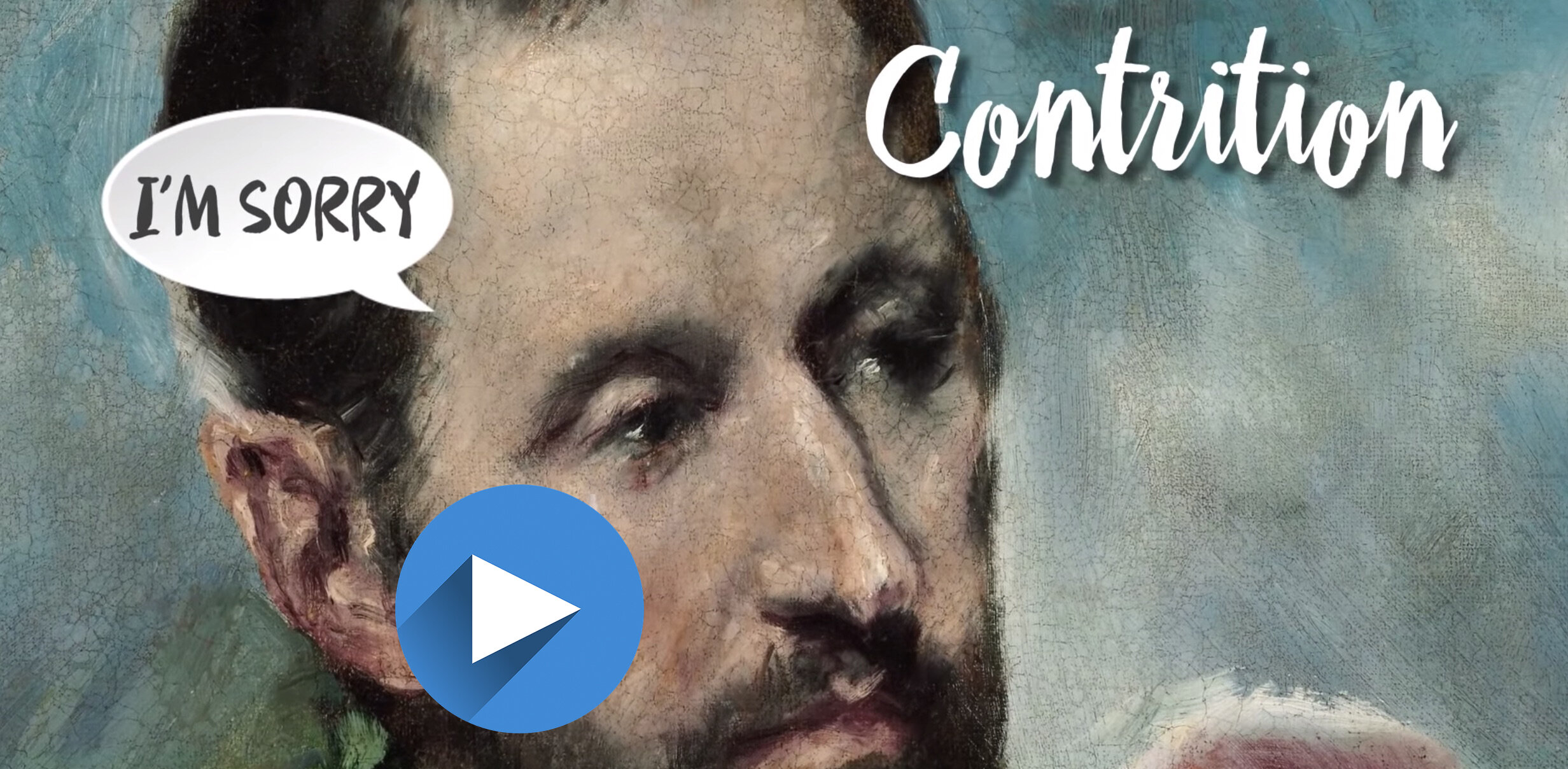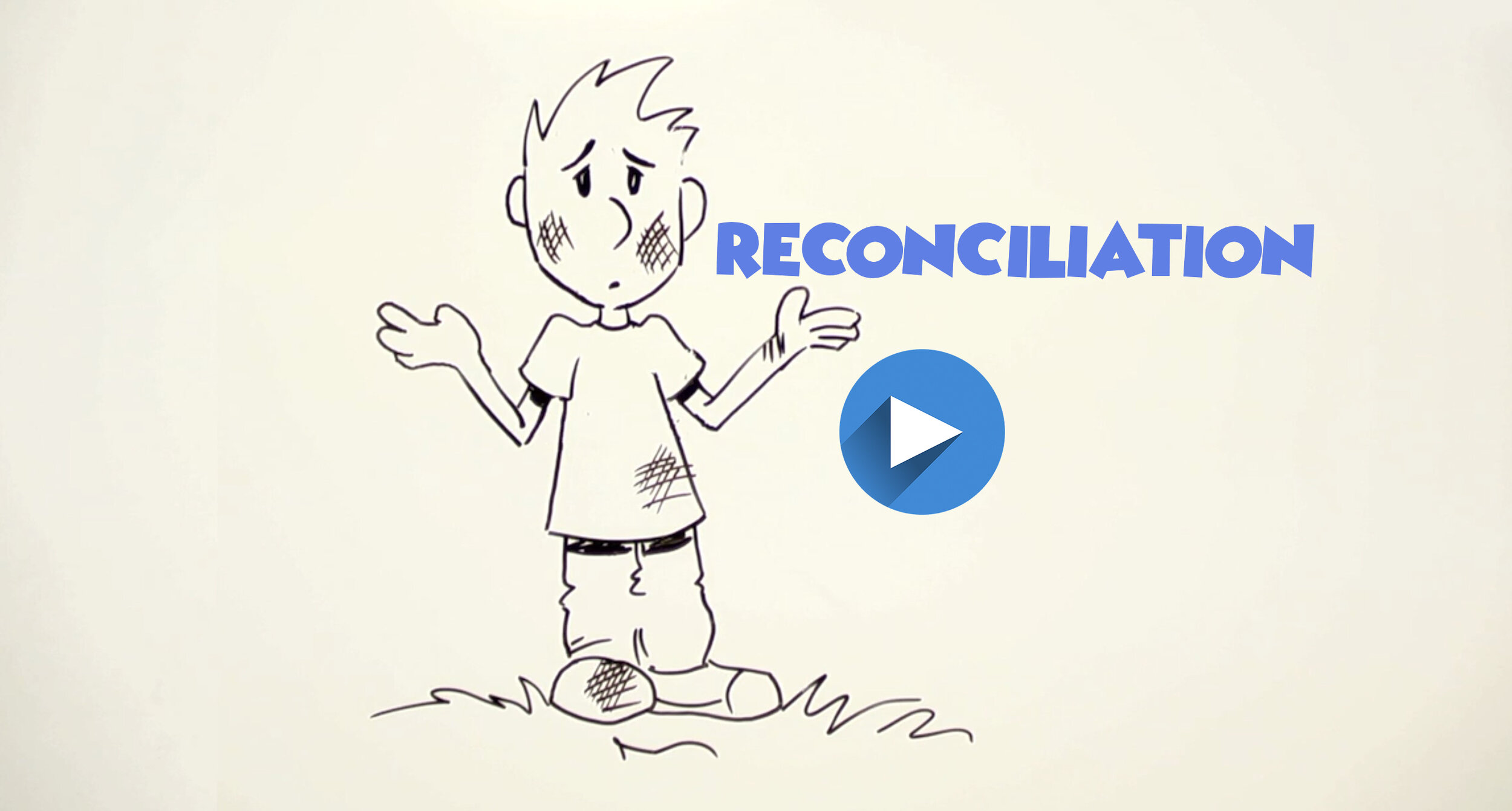Reconciliation
(confession)
Due to the Covid-19 pandemic, reconciliation is available at Epiphany by appointment only. You may call the parish office to schedule an appointment (212-475-1966).
Reconciliation (also known as Confession or Penance) is a sacrament instituted by Jesus Christ in his love and mercy to offer sinners forgiveness for offenses committed against God. In Reconciliation, we acknowledge our sins before God and his Church. We express our sorrow in a meaningful way, receive the forgiveness of Christ and his Church, make reparation for what we have done, and resolve to do better in the future.
Every time we go to confession, God embraces us.
- Pope Francis -
FOUR STEPS
TO RECONCILIATION
Step 1: Contrition
Contrition is "sorrow of the soul and detestation for the sin committed, together with the resolution not to sin again."
Step 2: Confession
The confession (or disclosure) of sins, even from a simply human point of view, frees us and facilitates our reconciliation with other
Step 3: Absolution
The priest speaks the words by which “God, the Father of Mercies” reconciles a sinner to himself through the merits of the Cross.
Step 4: Satisfaction
An important part of our healing is the “penance” the priest suggests in reparation for our sins.
STEP 1: CONTRITION
Confession is not difficult, but it does require preparation.
Before we enter the Confessional, we should begin with prayer. We should review our lives since our last confession, searching our thoughts, words and actions for that which did not conform to God’s command to love Him and one another through His laws and the laws of His Church. This is called an examination of conscience.
HOW TO MAKE AN EXAMINATION OF CONSCIENCE
Begin with a prayer asking for God’s help.
Review your life with the help of questions based on the Ten Commandments.
There are various types of examinations of conscience but regardless of which one you use to prepare yourself for the Sacrament it should be rooted in Scripture; particularly, the Ten Commandments and Beatitudes.
Tell God how truly sorry you are for your sins.
Make a firm resolution not to sin again.
If you are unsure about how to confess or you feel uneasy
Ask the priest to help you - This is what Father became a priest to do: to make us friends with God again.
Place your trust in God - Our Heavenly Father is merciful.
Remember that God loves you - He wants to give you this free gift of His mercy and His love.
STEP 2: Confession of Sins
Mercy is the force that reawakens us to new life and instills in us the courage to look to the future with hope.
—Pope Francis
Enter the Confessional
The Sacrament of Reconciliation may be face-to-face or anonymous, with a screen between you and the priest. Choose the option that is the most comfortable for you.
Begin your confession
When you enter the confessional, the priest will give you a blessing or greeting. He may say a short prayer. Make the Sign of the Cross and say, "Bless me Father for I have sinned, It has been [X days, weeks, years] since my last confession.”
Confess your sins
After you have confessed all of your sins
Say "I am sorry for these and all of my sins." The priest will then offer you advice to help you be a better disciple of Jesus, such as how to better work with the graces that God is giving you in your life, or ways to combat your weaknesses or habitual sin. He will then suggest a way to show your gratitude for being forgiven and loved by God—perhaps to pray for someone else, perform an act of love for another person, read some spiritual writings, seek forgiveness from someone you have injured.
Say an Act of Contrition
This is a way of expressing your sorrow for your sins.
Oh my God, I am heartily sorry for having offended you, and I detest all my sins because I dread the loss of heaven and the pains of hell; but most of all because they offend you, my God, who are all good and deserving of all my love. I firmly resolve with the help of your grace to confess my sins, do penance, and to amend my life. Amen.
The priest, acting in the person of Christ, then absolves you from your sins.
STEP 3: ABSOLUTION
Restoration of friendship with God
When the priest absolves you, he will say the words:
I absolve you from your sins in the name of the Father, and of the Son and of the Holy Spirit
For those who receive the sacrament of Penance with contrite heart and religious disposition, Reconciliation is usually followed by peace and serenity.
STEP 4: SATISFACTION
Completing the penance suggested by the priest
Raised up from sin, the sinner must still recover his full spiritual health by doing something more to make amends for the sin: he must "make satisfaction for" or "expiate" his sins.
This satisfaction is also called "penance."
When one finishes Confession one leaves free, grand, beautiful, forgiven, candid, happy. This is the beauty of Confession!
— Pope Francis





